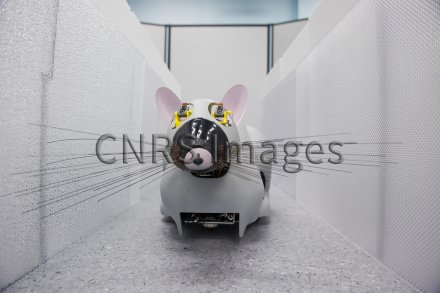Production year
2009

© Benoît RAJAU/ISIR/CNRS Images
20090001_0871
Psikharpax, robot-prototype long de 50 cm ayant une morphologie, un équipement sensorimoteur et une architecture de contrôle inspirés de l'anatomie et des circuits nerveux du rat. Il peut reconnaître et distinguer une source sonore grâce à son système auditif, reconnaître et distinguer des objets ou des textures (comme celles des parois de ce couloir ), de jour comme de nuit, gràce à sa vision et à ses vibrisses. Le projet Psikharpax est à la fois fondamental (mieux comprendre le fonctionnement du système nerveux d'un mammifère) et appliqué (mise au point d'un robot adaptatif, capable d'autonomie dans le choix de ses buts et de ses actions).
The use of media visible on the CNRS Images Platform can be granted on request. Any reproduction or representation is forbidden without prior authorization from CNRS Images (except for resources under Creative Commons license).
No modification of an image may be made without the prior consent of CNRS Images.
No use of an image for advertising purposes or distribution to a third party may be made without the prior agreement of CNRS Images.
For more information, please consult our general conditions
2009
Our work is guided by the way scientists question the world around them and we translate their research into images to help people to understand the world better and to awaken their curiosity and wonderment.